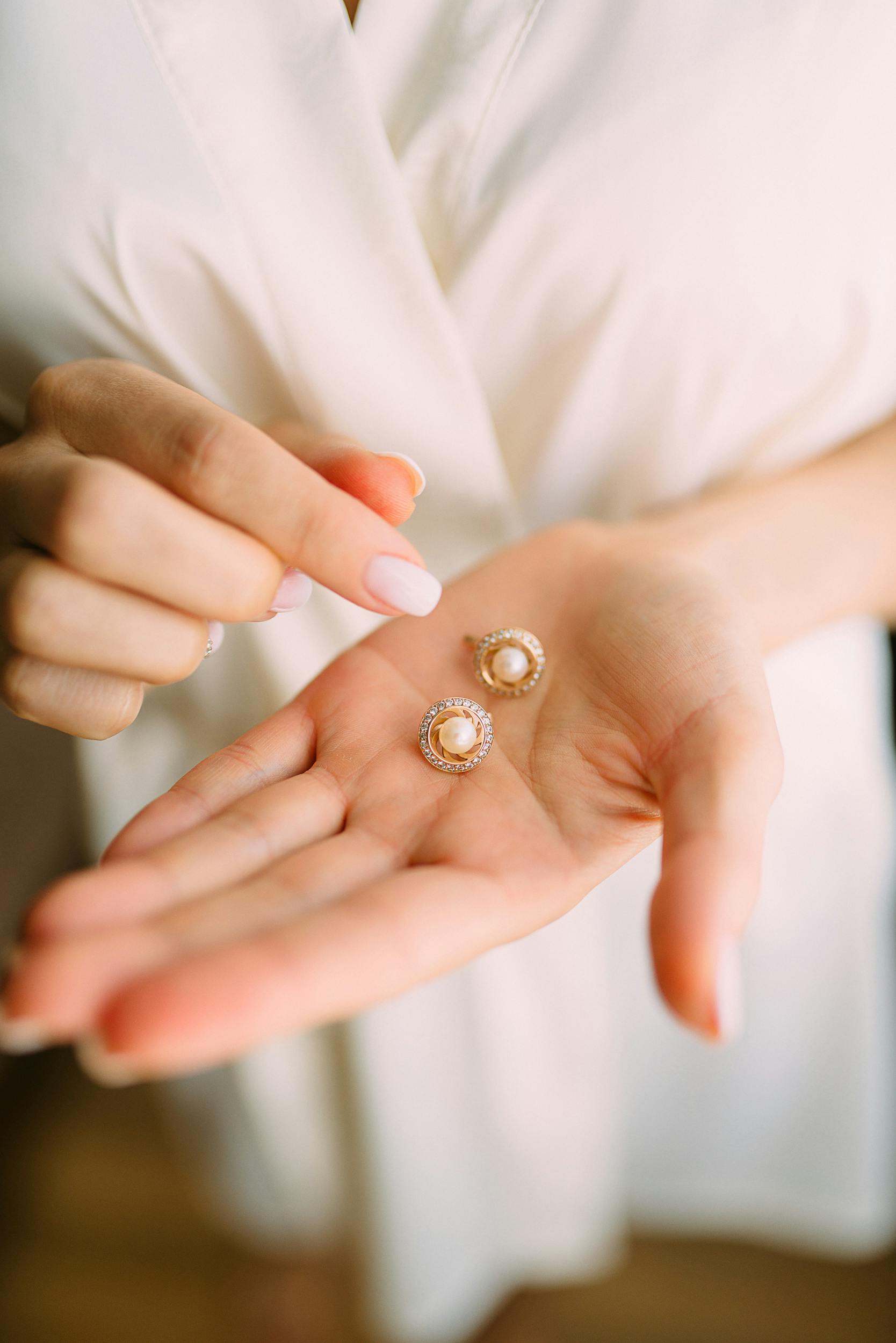
Rings and bracelets are traditional symbols of connection, yet many couples now seek alternatives that feel modern, comfortable, and distinctive. Pearls offer surprising versatility, moving beyond necklaces into studs, cufflinks, and pendants; but which pearl pieces make convincing his and hers alternatives?
This guide explains which pearl pieces can replace rings and bracelets, how to match design, scale, and tone for complementary his and hers pairs, and what to look for in durability, secure fastenings, and practical wearability. Find styling ideas for everyday wear, special occasions, and personalised gifting to help you choose pieces that look cohesive and withstand everyday life.

Choose pearls as stylish alternatives to rings and bracelets
Coordinate his-and-hers looks by matching pearl family, colour, or metal finish while varying form and scale. Choose the same white Akoya or grey South Sea tone set as a single low-profile cufflink or tie pin for him, and as a slightly smaller pendant or slim band for her, because larger, irregular pearls read bolder and smaller, uniform pearls read more delicate. Create cohesion without matching exactly by keeping one shared element, such as pearl hue or metal, and contrast lustrous pearls with matte leather, brushed metal, or hammered textures.
Replace bracelets and rings with gendered, practical jewellery options that suit activity levels and keep hands free. For men, opt for larger-bead freshwater or baroque bracelets strung on leather or heavy-duty elastic, bezel-set single-pearl cufflinks, mother-of-pearl signet inlays, or pearl-set shirt studs; for women, choose knotted strands, delicate bead bracelets, pearl drops on chain, adjustable pearl stack rings, or slim pearl-set bands with low-profile settings to reduce snagging. Specify construction details such as knotting between beads, reinforced crimps, and hard-wearing metal backs, and favour careful storage and wear by avoiding perfumes and chlorinated water, storing pieces flat in soft pouches, and choosing drilled or baroque pearls for higher-impact use.
Pair his cufflink with a delicate freshwater pearl pendant
Select pearl pieces that replace rings and bracelets
Position pearl cufflinks, shirt studs, and tie pins near the hands to recreate the social visibility of a ring, choosing screw-back or whale-back fittings for durability and selecting pearl size for subtlety or statement. Short pendants and chokers can act as ring alternatives when worn at the clavicle, with leather cords, brushed chains, or dog-tag shapes lending a more masculine read, and fine chains or calibrated pearls offering a complementary feminine version. Ear pieces such as studs, huggies, ear cuffs, or graduated stacks draw attention in face-to-face interactions much like a ring during a handshake, so favour secure backs and stagger sizes for contrast.
Wrist focal points need not be bracelets: integrate pearls into watch straps, cuff-style watch covers, or robust leather wraps with embedded pearls, and prefer flush settings and reinforced attachments for daily wear. Match metal finish between partners to signal cohesion, and align pearl family, nacre quality, colour, and scale rather than identical settings to respect individual style. Pair a round pearl with a baroque counterpart, or use the same pearl mounted on different metals to create a linked but personal look. These approaches let couples keep a shared visual language while allowing each piece to read more delicate or more rugged depending on chain, cord, or collar choices.
Anchor your look with a round pearl at the clavicle.
Match design, scale, and tone for his and hers pairs
Pair the same pearl type and overtone, then vary the setting so the pieces read as a deliberate set; for example, use an identical saltwater or freshwater pearl in a pendant and a cufflink, or a stud and a lapel pin. Match scale to anatomy and function, choosing smaller pearls for cufflinks, studs, and tie pins, medium sizes for pendants and short necklaces, and larger pearls for statement necklaces. Proportion pearls to the wearer so each piece sits balanced rather than overwhelmed or insubstantial.
Harmonise tone through metal choice and finish by selecting the same metal family for both pieces and using finish to alter mood, with high polish for formality and brushed or matte for restraint. Translate a simple motif, such as a bezel, bar, or knot, across different forms so a chunky bar pearl for him and a suspended pearl pendant for her read as variations on the same idea. Design for everyday wear and longevity by favouring low-profile settings and secure mounts, seating pearls slightly recessed to reduce knocks, choosing thicker nacre for durability, and including brief care guidance to preserve colour and lustre.
- Scale and proportion cheat sheet: use 5 to 7 mm for cufflinks, studs, and tie pins; 6 to 8 mm for small pendants and everyday studs; 8 to 10 mm for pendants and short necklaces; 11 mm and above for statement necklaces. Always choose the same pearl type and overtone first, then scale by 1 to 2 mm to suit the wearer’s anatomy or to emphasise a more substantial, masculine reading.
- Metal and finish pairing guide: pick the same metal family for both pieces to harmonise tone. Platinum, white gold, and palladium read formal and crisp; yellow and rose gold read warm and classic or contemporary. Use a high polish to heighten formality, and a satin or brushed finish to restrain shine. Prefer solid metal for everyday pieces, or expect replating to address wear if you choose plated finishes.
- Translate a single motif across forms: choose a simple motif such as a bezel, bar, or knot and rework it for each item so they read as deliberate variations. For example, a chunky horizontal bar with a set pearl for cufflinks can become a vertical suspended bar pendant, or a tight bezel on a stud can become an open-back bezel on a pendant. Keep line weight and proportion consistent, using chunkier treatments for smaller men’s pieces and sleeker, suspended interpretations for women’s pieces.
- Design-for-wear and longevity checklist: favour low-profile settings and seat pearls slightly recessed to reduce knocks, use mechanical security plus adhesive only where appropriate, choose pearls with thicker nacre to resist chipping and colour loss, and arrange regular inspection and servicing of mounts. After wear, wipe pearls with a soft cloth, avoid perfumes and chlorinated water, and store each piece separately on a soft surface to prevent scratching.

Prioritise durability, secure fastenings, and practical wearability
For conservative alternatives to rings and bracelets, cufflinks, shirt studs, and sleeve fasteners can carry pearls when set low and protected in bezel, halo, or bar mounts that shield edges and spread impact. Use screw-post, whale-back, or bolt-back closures to prevent loss, and favour mechanical fittings over glued mounts so the pearl resists knocks rather than taking the force itself. Tie bars, lapel pins, and collar pins should sit flat with low-profile mounts and locking catches or screw fittings that clamp to fabric, and they benefit from solid metal cores to prevent bending.
Pendant tokens and dog-tag alternatives work well for both partners when pearls sit in cup or flush settings on robust chains or coated cords with lobster, box, or screw-lock clasps, and designers should keep them short and close to the body to reduce snagging and abrasion. For strung pieces, use doubled, coated cable or silk cord with crimped ends and bead-knotting between pearls so a single break limits loss, and choose corrosion-resistant clasps and crimp sleeves to withstand sweat and humidity. Make convertible, attachable options by mounting pearls in removable slides, screw-on bezels, or carabiner-style fittings that use soldered links, rated spring clips, or threaded rings so the item can clip to a watch strap, belt loop, or key fob and be worn hands-free when rings or bracelets are impractical.
Wear a low-profile pearl pendant on an 18-inch chain.
Style pearls for occasions, everyday wear, and personalised gifting
Pairing the same pearl variety across his and hers pieces creates visual unity while allowing different scales and mountings to suit anatomy and taste. Use freshwater pearls for textured, versatile looks, Akoya for smaller, high lustre pieces, and Tahitian or South Sea pearls for larger, statement items, and match metals to tie the pair together. Practical alternatives to rings and bracelets include cufflinks and tie pins for suiting, lapel studs and small brooches for formal jackets, stud earrings and bar pendants for daily wear, and signet-style mounts or collar pins as masculine-forward options, each matched to typical wear scenarios so the recipient can choose pieces that fit their routine.
Design choices that protect pearls increase wearability: favour low-profile bezel or halo settings to shield nacre, choose secure catches such as screw-backs or locking clasps, avoid long drops for active lifestyles, and pick harder metals or platings to reduce spotting and abrasion. Those choices reduce common risks by keeping the pearl close to the body, preventing catches, and limiting exposure to knocks and chemicals. For personalised gifting, conceal a short engraved message on a pendant bail or inside a locket, add a small birthstone accent beside the pearl, scale matching motifs or initials across two pieces, or design mirrored settings so the pair reads as a set without being identical while keeping the pearl front-facing. For occasion templates, select a single large pearl set as a drop pendant or cufflink for formal events, darker or larger saltwater pearls for evening presence, and small studs, bar pendants, or discreet lapel pins in matte metal for everyday wear, and include a brief care note that reflects the recipient’s lifestyle and the setting’s durability.
Pearls offer versatile, hands-free alternatives to rings and bracelets by translating visual weight into cufflinks, studs, pendants, and integrated watch or strap details. Matching pearl family, overtone, or metal unifies a pair, while varying scale, setting, and finish lets each item read more delicate or more rugged for the wearer.
Use the selection, matching, and durability guidance, such as secure screw-backs, low-profile bezels, and knotting or crimping for strung pieces, to prioritise daily wearability without sacrificing cohesion. Follow those practical choices, pick a shared design element, and add a brief care note or convertible fittings so the paired pieces endure, feel personal, and suit everyday life.






